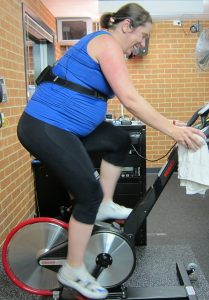As late as the middle of the 20th century, pregnancy was considered a delicate condition and women were encouraged to take it easy during the prenatal period. Moreover, an acronym commonly used in medicine for a woman’s due date was EDC, meaning “expected date of confinement.” These ideas may seem hypersensitive or even ridiculous to us. Consider that physical stress like endurance training was once viewed to be unsuitable for “the weaker sex.”
Driven by social changes like the feminist movement and the pioneers of women’s athletics, medical researchers began to question these recommendations. Leading the way was the American College of Obstetrics and Gynocologists (ACOG). This professional group is considered the foremost authority on women’s reproductive health in the United States. In the 1990s, along with other organizations, ACOG presented guidelines for best practices regarding prenatal exercise (Kehler and Heindirch, 2015). This type of evidence-based inquiry shatt
ered the misconceptions that women did not have the stamina for prenatal exercise, and pregnancy began to be considered a state of health rather than a condition of confinement.
 Over the past 20-plus years as an indoor cycling instructor, I have coached many of my clients through healthy pregnancies. Some of these women continued to participate in class right up to the time of delivery. One of my clients felt good enough and was motivated enough to participate in class the morning of her due date and went into labor that afternoon! This is not to say that everyone should pedal into the delivery room; the anecdote merely emphasizes the point that with the monitoring and support of a woman’s obstetrician, smart training practices, and knowledgeable coaching, pregnancy and exercise are not mutually exclusive.
Over the past 20-plus years as an indoor cycling instructor, I have coached many of my clients through healthy pregnancies. Some of these women continued to participate in class right up to the time of delivery. One of my clients felt good enough and was motivated enough to participate in class the morning of her due date and went into labor that afternoon! This is not to say that everyone should pedal into the delivery room; the anecdote merely emphasizes the point that with the monitoring and support of a woman’s obstetrician, smart training practices, and knowledgeable coaching, pregnancy and exercise are not mutually exclusive.
As coaches, we understand that our clients have made a commitment to healthy habits like regular exercise. By understanding the physiologic changes that accompany pregnancy we can design a proper training program for our clients so that they can safely continue to participate in indoor cycling during the prenatal period.
Objectives for this article
- Identify the physiologic changes that accompany pregnancy
- Recognize the benefits of prenatal exercise
- Identify the restrictions and contraindications for exercise in pregnancy
- Apply safe training practices for prenatal clients in indoor group cycling environment

